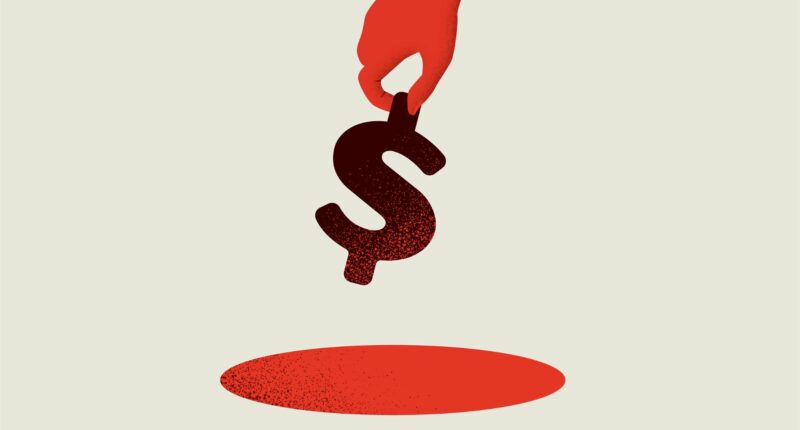Share this @internewscast.com
Opinions expressed by Entrepreneur contributors are their own.
Let’s cut to the chase: most companies go to conferences to check a box, not to drive results.
I have collaborated with both massive corporations and emerging startups. I’ve witnessed extravagant booths with huge budgets yield no results, while a LinkedIn direct messaging campaign outdid a whole sponsorship deal. Why does this happen? Many businesses approach conferences like a high school science fair: make things look attractive, distribute giveaways, and cross their fingers that someone will be impressed.
Here’s the brutal truth: If your event strategy is built around foot traffic and branded socks, you’re already underwater.
Conferences can indeed provide substantial returns on investment, but only when you stop seeing them as isolated activities and recognize them as they truly are: dynamic, short-attention-span funnels.
Step 1: Get ruthlessly clear on why you’re going
This sounds obvious. It’s not.
Most companies attend events with vague goals like “brand awareness” or “thought leadership.” Translation: no real strategy.
If you can’t answer, “What does success look like from this event, and how will we measure it?” then it’s best to skip the booth. Your purpose should fall under one of three main goals:
- Lead generation (measurable pipeline and conversion)
- Brand positioning (keynote, panel or media presence)
- Strategic partnerships (investor intros, co-marketing, business development)
Pick one primary goal. Then reverse-engineer your entire presence around it. Everything else is noise.
Step 2: Craft a message that cuts through the noise
Nobody cares about your “AI-powered scalable solutions” if that’s all you’re saying.
You need a message that punches. Something that aligns with the conference theme but actually says something.
Consider a B2B SaaS client of ours who recently sponsored a fintech event. The buzzword was “frictionless onboarding.” Dull, right? We shifted their story to: Stop onboarding users who’ll churn in 30 days. It grabbed attention. It made executives pause and inquire, “Can you elaborate?” That’s the standard you should aim for.
Your message should be:
- Clear (no buzzwords)
- Controversial (just enough to spark conversation)
- Consistent (across booth, decks, social and follow-up)
Step 3: Pre-game like a pro
You don’t show up to a marathon without training. So don’t show up to a $50,000 event without a warm list.
Your pre-conference playbook should include:
- LinkedIn outreach (three to four weeks out): Target attendees, engage with event hashtags and join relevant groups. No pitches — just real engagement
- Direct invites: Email past leads or ideal customers: “I’ll be at [Event]. Let’s meet IRL if you’re attending.”
- Organic buzz: Have leadership — not just the company page — post about why you’re attending and what you’re bringing
Remember, ROI doesn’t start at the conference. It starts the moment your name hits the attendee list.
Step 4: Focus on booth experience, not booth design
You don’t need a spaceship booth. You need meaningful conversations.
Train your team to do more than demo software. Teach them to:
- Ask smarter questions
- Listen for pain points
- Offer real value (not just tchotchkes — think insights or content)
- Capture context for every lead (“Spoke about [X] challenge, referred by [Y]”)
Also — script your follow-up before the show starts. A generic “Great to meet you at [Event]” email kills momentum fast.
Step 5: Follow up like money’s on the line
The event ends when the lights go off. Your window of influence doesn’t.
Here’s a seven-day follow-up cadence that actually works:
- Day 1: Personalized email referencing your conversation plus a relevant asset
- Day 3: LinkedIn message with a short, value-driven follow-up
- Day 5: Add to nurture stream based on interest or product line
- Week 2: Send a post-event content piece — e.g., “5 things we learned at [Event name]”
Then — debrief. What worked? What didn’t?
Document it. If sales aren’t in this conversation, your next event is already a sunk cost.
Bonus: Rethink sponsorship ROI
Here’s a hot take — most sponsorship packages are overpriced hype.
Unless you’re getting:
- Guaranteed stage time
- Tier-1 placement in attendee materials
- Verified audience data before the event
You’re probably better off hosting a private dinner with ten decision-makers or doing a focused side activation.
Relevance beats visibility every time.
A 20-minute meeting with a CMO is worth more than 2,000 logo impressions.
Final word: Be the booth they remember
You don’t win at events by being the loudest. You win by being the clearest, the most relevant and the hardest to ignore.
So, before you spend another hefty amount on flashy displays and mediocre leads, reflect: Are we attending this event just to be present, or to make a real impact?
If it’s the latter, you’re already ahead of the pack.
Let’s cut to the chase: most companies go to conferences to check a box, not to drive results.
I have collaborated with both massive corporations and emerging startups. I’ve witnessed extravagant booths with huge budgets yield no results, while a LinkedIn direct messaging campaign outdid a whole sponsorship deal. Why does this happen? Many businesses approach conferences like a high school science fair: make things look attractive, distribute giveaways, and cross their fingers that someone will be impressed.
Here’s the brutal truth: If your event strategy is built around foot traffic and branded socks, you’re already underwater.
The rest of this article is locked.
Join Entrepreneur+ today for access.











